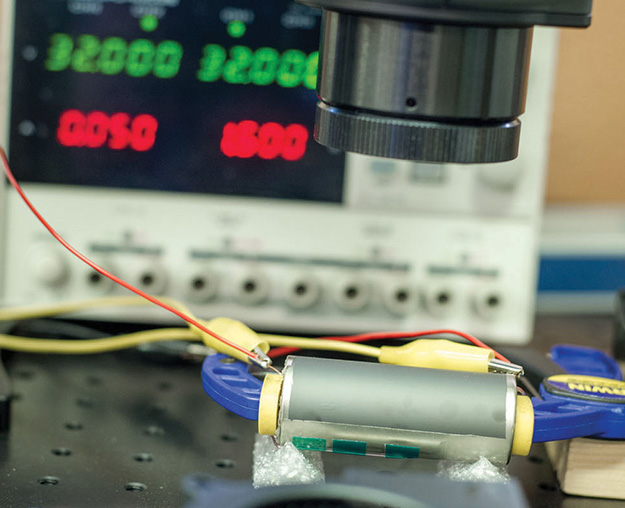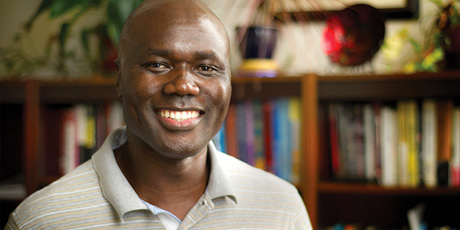Inside Threat
Beating the Heat
Understanding how heat flows in batteries could make technology more efficient and reliable

Removing heat from batteries will make them safer and more efficient
Electric cars, laptops, smartphones—these and other electronics we use every day rely on lithium ion batteries to function. To help make those batteries safer, more efficient, and more reliable, Assistant Professor Ankur Jain is investigating how the heat flows inside.
"The current performance of these batteries is limited by the fact that they tend to overheat when discharged," the mechanical engineer explains. "Improvement in heat removal from a battery will directly improve its performance, as well as its safety and reliability."
The end goal is to fundamentally understand the nature of heat flow—and what can impede that flow—in energy conversion devices such as Li-ion cells.
Dr. Jain's work is supported by a five-year, $500,000 Faculty Early Career Development (CAREER) grant from the National Science Foundation.
Anand Puppala, associate dean for research in the College of Engineering, notes the far-reaching potential of Jain's project:
"His research could have a broad impact on industries that rely on Li-ion batteries to power devices with applications from the cars we drive to military uses to our personal computers. That type of innovative thinking is how UTA researchers are able to change the world for the better."
Jain is one of four CAREER award winners from UTA announced this year, along with assistant professors Yuze "Alice" Sun, Yi Hong (Read more about his achievements), and Zunzhou Huang, all from the College of Engineering.

















